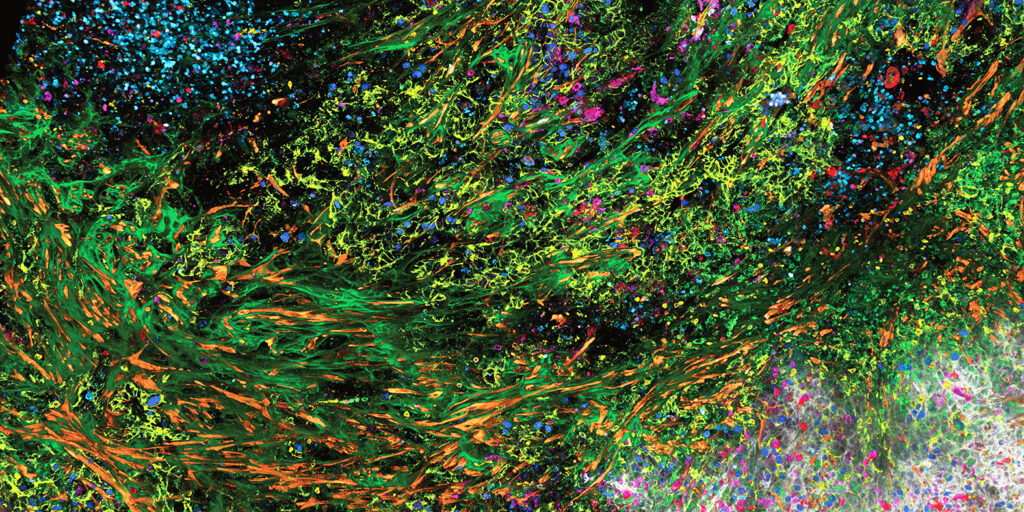Tech Exchange with Lightcore Technologies and Leica
When
November 29, 2024 14:00–15:00 CET
Presented by
Ouis Boumeddine; Gajendra Kumar; Julia Roberti
Double-feature at our next TechExchange webinar!

At 14:00h CET, we welcome Ouis Boumeddine and Elliot Cornet from Lightcore Technologies. They will be presenting on "Advances in Multimodal Imaging : Leveraging Dual-Channel SRS microscopy for Label-Free Three-Dimensional Imaging by Lightcore Technologies ".
The BondXplorer microscope is a turnkey coherent Raman and multiphoton imaging platform designed for label-free, three-dimensional chemical imaging and virtual histology with broad research applications. This versatile system integrates stimulated Raman scattering (SRS), coherent anti-Stokes Raman scattering (CARS), and multiphoton imaging (TPF, SHG) into one high-sensitivity platform. Powerd by the dual color SRS deltaEmerald laser system from APE, this system uniquely features simultaneous dual-channel SRS imaging which is particularly beneficial for obtaining background-free Raman signals in the fingerprint region and which enables the simultaneous acquisition of two signals from both CH2 and CH3 bonds, facilitating lable-free live histological imaging.

Scale bar: 85µm.

Scale bar : 170µm.
Additionally, the laser system operates in two regimes: a picosecond source optimized for SRS/CARS imaging and a fixed-wavelength femtosecond source specifically designed for 2P processes, enabling simultaneous coherent Raman and two photon imaging.
In this webinar, we will present an in-depth overview of our imaging platform, highlighting its key features and capabilities and showcasing its versatility through various applications, such as live virtual histology with an AI-powered coloring scheme, skin imaging, and organoid imaging.
Image sources : Histology - Lightcore Technologies

Followed at 14:30h CET by Dr. Julia Roberti, Senior Product Manager, Advanced Confocal Imaging and Business Unit Life Science & Applied Solutions, Leica Microsystems.
Julia will be presenting on "Overcoming the high multiplexing barrier: 3D Spatial Omics in one go, powered by Leica Microsystems".
The STELLARIS confocal platform offers significant advancements for high-multiplex strategies, integrating a tunable white light laser (WLL) with an excitation range from 440 nm to 790 nm and up to five highly sensitive, photon-counting spectral detectors. This configuration enables complete flexibility in detection from 410 nm to the near-infrared (NIR) spectrum (1), accommodating a broad array of fluorophores and optimizing their combinations for complex imaging tasks.
In this presentation, we will introduce the new SpectraPlex 3D high-multiplex solution for the STELLARIS confocal platform (2, 3). We will detail the experimental design and considerations for executing high-multiplex experiments with 15+ fluorophores on a single sample, including the selection of optimized panels and the inherent challenges associated with these approaches. We will address the technical aspects of imaging high-multiplex samples in a single round of labeling and imaging, demonstrating its application for 3D spatial omics.

Our aim is to provide a comprehensive understanding of how these technologies can be leveraged to generate detailed spatial omics data, thereby advancing the field of spatial biology.
- The Power HyD family of detectors. Schweikhard et al., Nature Methods (2022). DOI: d42473-020-00398-0.
- 3D multiplexing imaging in cancer immunology. Kunz L., Speziale D., et al., Nat. Methods (2024). DOI: d42473-024-00260-7
- SpectraPlex: A powerful toolbox for advanced 3D high-multiplex imaging. Roberti, M. J., Hecht F. et al., Nat. Methods in press (2024). DOI: d42473-024-00262-5